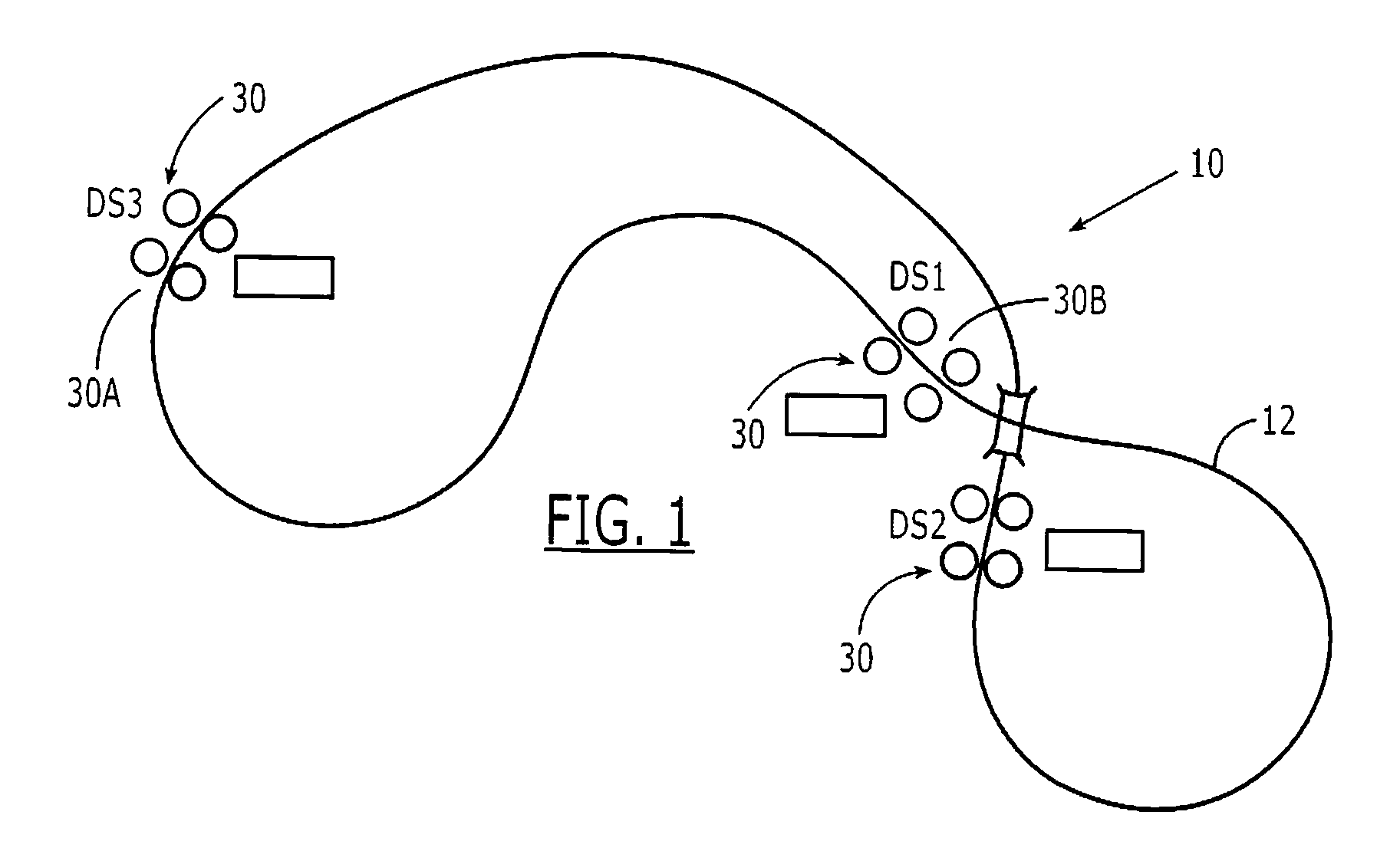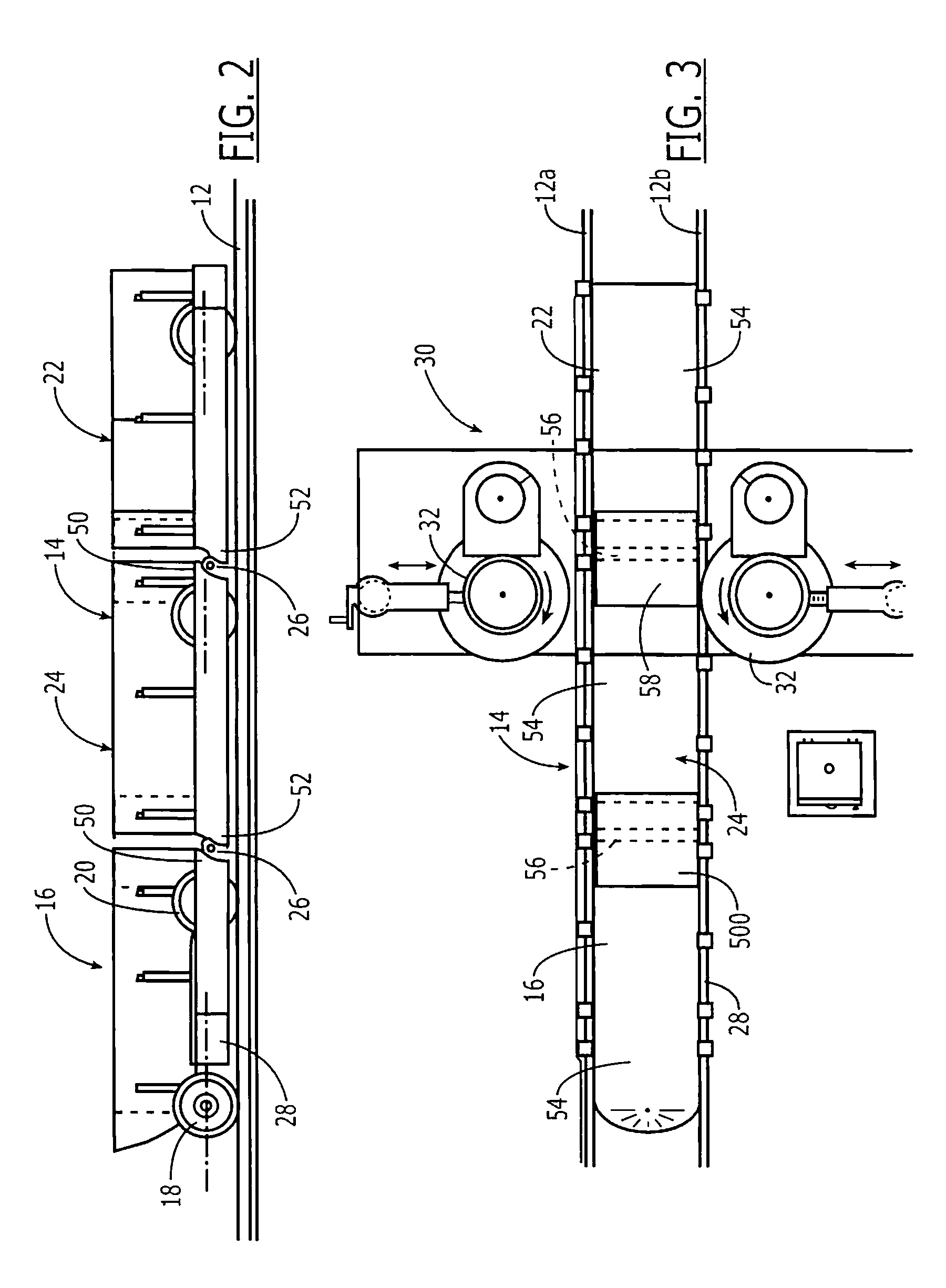Method of Controlling a Rail Transport System for Conveying Bulk Materials
a rail transport system and bulk material technology, applied in the direction of vehicle position/course/altitude control, process and machine control, instruments, etc., can solve the problems of limited site specific applications of vehicles, high capital cost, limited hill climbing ability, etc., to achieve improved control, reliable determination of train location, and high speed
- Summary
- Abstract
- Description
- Claims
- Application Information
AI Technical Summary
Benefits of technology
Problems solved by technology
Method used
Image
Examples
Embodiment Construction
[0031]The present invention will now be described more fully hereinafter with reference to the accompanying drawings, in which embodiments of the invention are shown. This invention may, however, be embodied in many different forms and should not be construed as limited to the embodiments set forth herein. Rather, the embodiments herein presented are provided so that this disclosure will be thorough and complete, and will fully convey the scope of the invention to those skilled in the art.
[0032]By way of example, a control system in keeping with the teachings of the present invention is herein described using the Rail-Veyor™ system. Other applications may include underground mining operations where the loaded train is stacked on top of an inverted empty return train, which reduces the horizontal profile, and an application where the train is connected in a continuous loop like a conventional conveyor without the belt tensioning problems and potential fire risks resulting from drive ...
PUM
 Login to View More
Login to View More Abstract
Description
Claims
Application Information
 Login to View More
Login to View More - R&D
- Intellectual Property
- Life Sciences
- Materials
- Tech Scout
- Unparalleled Data Quality
- Higher Quality Content
- 60% Fewer Hallucinations
Browse by: Latest US Patents, China's latest patents, Technical Efficacy Thesaurus, Application Domain, Technology Topic, Popular Technical Reports.
© 2025 PatSnap. All rights reserved.Legal|Privacy policy|Modern Slavery Act Transparency Statement|Sitemap|About US| Contact US: help@patsnap.com



